
Children at the opening ceremonies of the Northtown Plaza playground, in 1962.
A favourite pastime among Torontonians—along with insisting far too early in the season that the Jays might have a shot at the pennant—is looking for ways to compare their city to New York. With arguably more cultural and social vibrancy than its counterpart to the south, the intersection of Yonge and Dundas continues to be referred to by locals as “Toronto’s Times Square.” And despite a beautiful new sidewalk (even if it tries a bit too hard), the stretch of Bloor Street between Avenue and Yonge remains unofficially dubbed “Toronto’s Fifth Avenue.” As a student of the Robertson Davies school of believing Canadian locales can be interesting on their own merits, Taddle Creek doesn’t care for such comparisons. So when New York magazine, in the spring of 2013, published an oral history of growing up in Manhattan and its surrounding boroughs, Taddle Creek saw a chance not only to completely steal an interesting editorial package idea, but also to showcase Toronto’s uniqueness.
Below, Taddle Creek presents its own oral history of growing up in Toronto, as told by twenty-five artists, writers, and (generally) arts-related people—ranging in age from seventeen to seventy-four—who called the city home in their formative years, and in most cases still do.
Taddle Creek’s interviews yielded many obvious differences between Toronto and New York but, in the end, comparison wasn’t the most interesting theme that emerged. More interesting was something that shouldn’t surprise readers of an arts-centric magazine such as this one, but is worth pointing out in light of Toronto’s recent political climate. The subjects interviewed here may run in the same circles today, but their backgrounds vary: some come from well-off families, others from working-class. A number grew up downtown, while others—many, in fact—were raised in the suburbs. Some of the subjects’ families have lived in the city for generations, while at least one arrived in Toronto as an immigrant. Yet no matter their background, nearly all were shaped by many of the same things: a city with one of the most respected library systems in North America; a transit system consisting of subways, buses, and streetcars that not only moves citizens within the core but offers access to downtown cultural centres and events to those living on the outskirts; an—albeit wanting—infrastructure of bicycle lanes and trails; and an eclectic group of neighbourhoods that embrace a variety of cultures and lifestyles.
All of these things that make Toronto so livable have been under attack—both verbally and fiscally—over the past four years by many of the city’s civic leaders (one or two in particular) who frequently and proudly tout their ignorance of what truly makes a so-called “world-class city.” That the outcome of Toronto’s 2014 municipal election is still cause for celebration despite lacklustre campaigns from the front-running candidates demonstrates just how desperate the city’s situation has become. But the high voter turnout in the core also shows Torontonians are willing to fight to keep the things that make their town a great place to live. Hopefully, under new—though still imperfect—leadership, the next generation of citizens will feel as inspired by the city as those presented here.
All interviews conducted, edited, and condensed by Conan Tobias. Mia Kirshner submitted a written memoir.
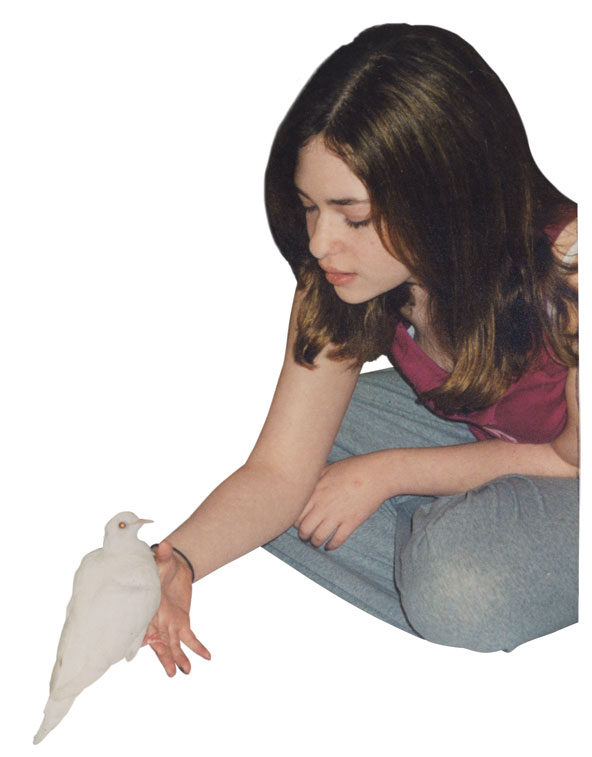
Haley Mlotek
Publisher, editor, writer; born 1986
I grew up more or less around Downsview station, but I had a very good friend, Sarah, who grew up at Bloor and Dufferin, right across the street from Dufferin Mall. I wasn’t really allowed to go on the subway or wander around by myself until I was in my teens, so she was my “bad friend”—I would go and visit her and we would walk the streets together because her parents thought it was very important for us to be free to walk around Toronto. I have really strong memories of her taking me to the stores on Queen Street, right at Queen and Spadina. There were all these really scary—to me, as a thirteen-year-old—goth clothing stores, but we just loved them. We would go every Saturday, or every other Saturday at least, and would buy candles that had Buffy the Vampire Slayer’s face printed on the side, or those tattoo-style chokers, or Emily the Strange patches—all of these pre–Hot Topic clothing accessories. I know Sarah saved up all her babysitting money and bought this crazy long leather jacket at the peak of Matrix hacker fashion, and I loved that. I was so terrified all the time because we were around all these cool goth teenagers and I was this sheltered small child. But I think it’s really important for your teen development to hang out at places you’re really afraid of.
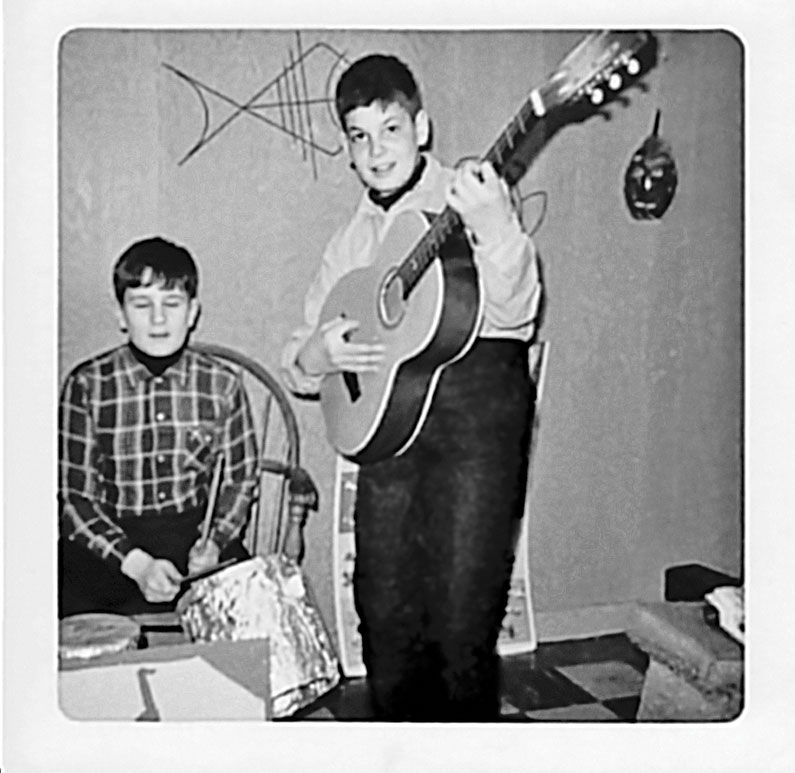
David Hayes
Writer, teacher; born 1953
I had a Globe and Mail paper route when I was about eight or nine. I had a bike with a big basket on the front that a bundle of newspapers could lie flat in. I’d ride to the corner at 6 a.m. and there’d be three or four bundles there for different paperboys for different routes. I had about forty-five papers on mine. Every bundle had a couple more papers than you needed. I think the reason for that was in case a neighbour came out of their house and said, “Hey, paperboy! I’d like to start the Globe,” you’d have an extra paper you could hand to that person and that would make them happy. You’d write their name and address on a card, notify the circulation department, and they’d become a new customer. If they called in to the Globe to start the paper, you’d get an extra paper and a card in your bundle, and you stuck the card into your booklet of cards, one for each of the people you were delivering to. You’d go and collect money each week, and then you’d punch a hole in the card to show they’d paid.
So what I had been taught by an older—and obviously criminal—boy that I took the route over from, was if someone calls you over and says they’d like to start the paper, you’ve always got extra cards in your booklet, so you would write their name and address down on that card, but you wouldn’t notify the Globe. As I was doing my route over a year, there might be three or four people who’d talked to me directly. So I’d have two extra papers, but three or four extras to deliver. So then I’d have to go to one of the Globe boxes, which in those days worked on an honour system. There was a slot to put your change in, but the papers were just sitting there. I’d look to make sure no one was around, and I would take however many papers I needed out of the box and add them to my bundle. So if the Globe thought I had forty-five customers, they were expecting me to give them whatever I collected from those customers each week, minus whatever amount the paperboy kept. But I was collecting from, say, forty-nine customers and keeping a hundred per cent of whatever I collected from the extra people.
Obviously there were dangers associated with this system. This kid had told me to say, “If by any chance you need to stop the paper because you’re going away on holiday, or you want to stop the Globe completely, just let me know when I come by to collect,” because you don’t want those extra customers to phone the Globe to say they want to stop the paper for a week and cause the circulation people to look and say, “Wait—this person isn’t on that guy’s paper route.” I can’t remember anyone ever getting caught, but if you did you would probably say, “Oh, I’m eight years old. I forgot. I filled out a card and I forget to tell you. I’m sorry,” and hope you could get away with it.
That was basically the criminal system that I had going at the time. I knew you weren’t supposed to do it, but it wasn’t like I was breaking into a store. I’m not proud of my criminal past, but I guess at eight years old, my sense of morality wasn’t what it became later.
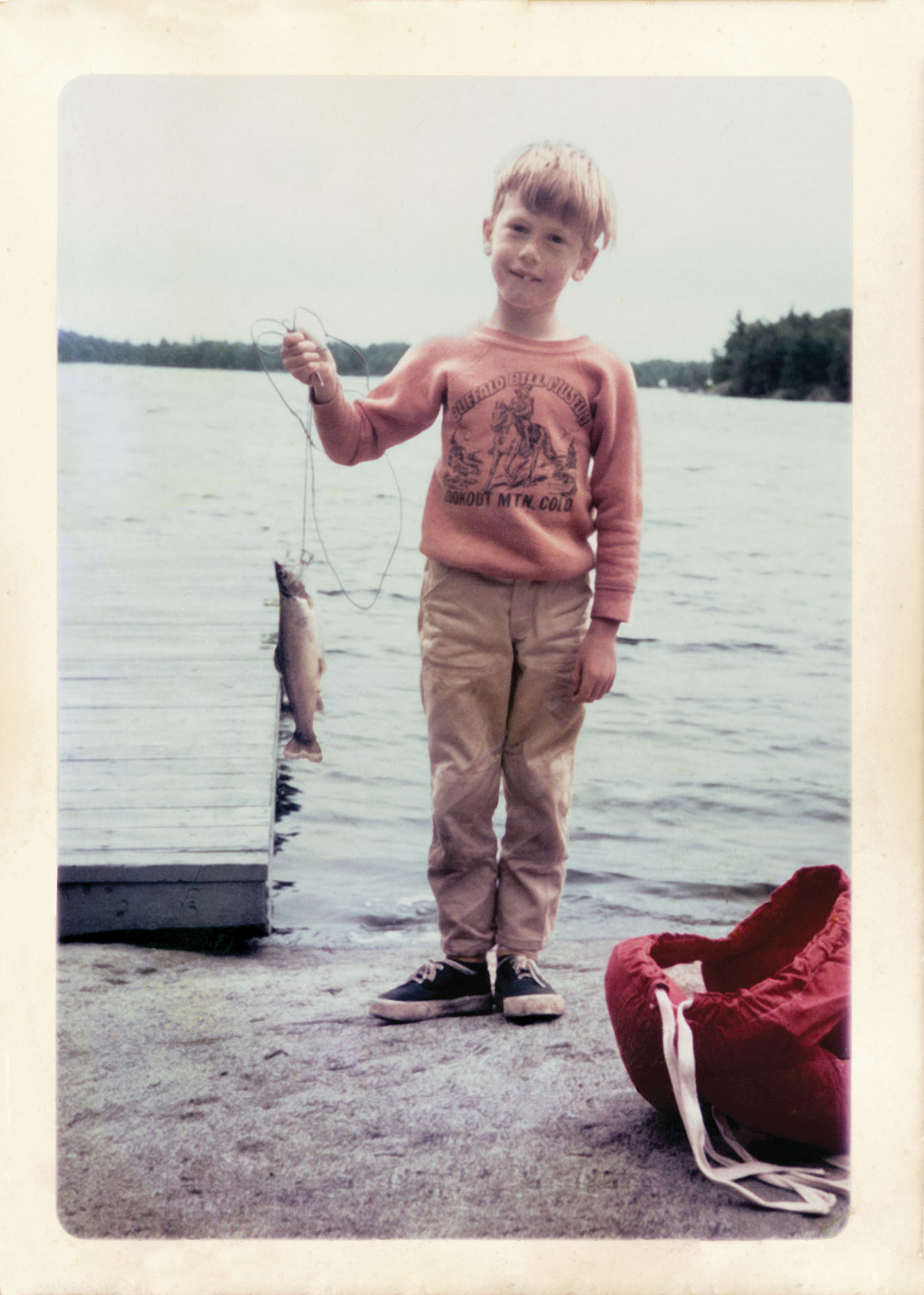
David Collier
Illustrator; born 1963
I got my comics education at Crosstown Discount Variety, at the corner of Heddington and Eglinton, and from the Forest Hill library, where you could find things like Birdseye Center collections and The Great Comic Book Heroes, by Jules Feiffer. When I was in Grade 6 I had a big cultural change because my parents bought this place on Walmer Road and all of a sudden I was hanging out downtown. There were all these cool kids at school whose parents worked at places like the CBC. One day in class I dropped my eraser on the floor and they saw that it had my initials, D.C., on it and they were like, “Hey, man—D.C.! That’s like DC Comics,” and all of a sudden I was in with the cool kids. The big thing the cool kids did for me was they took me to Memory Lane, the comic store in Mirvish Village. “Captain” George Henderson, the owner, was bitter at the comics industry and the comics-fan mentality of collecting, so he had comics with no covers, beat-up comics—they were good comics, like Carl Barks comics for twenty cents—and the walls of the store were papered with Sunday supplements from 1910. He just didn’t give a shit about value, but he loved the medium. I’d be really nervous in there because there’d be all these guys talking about smoking marijuana and older guys in college and guys working for the CBC and the National Film Board, and I was twelve years old. That was a big thing for me.
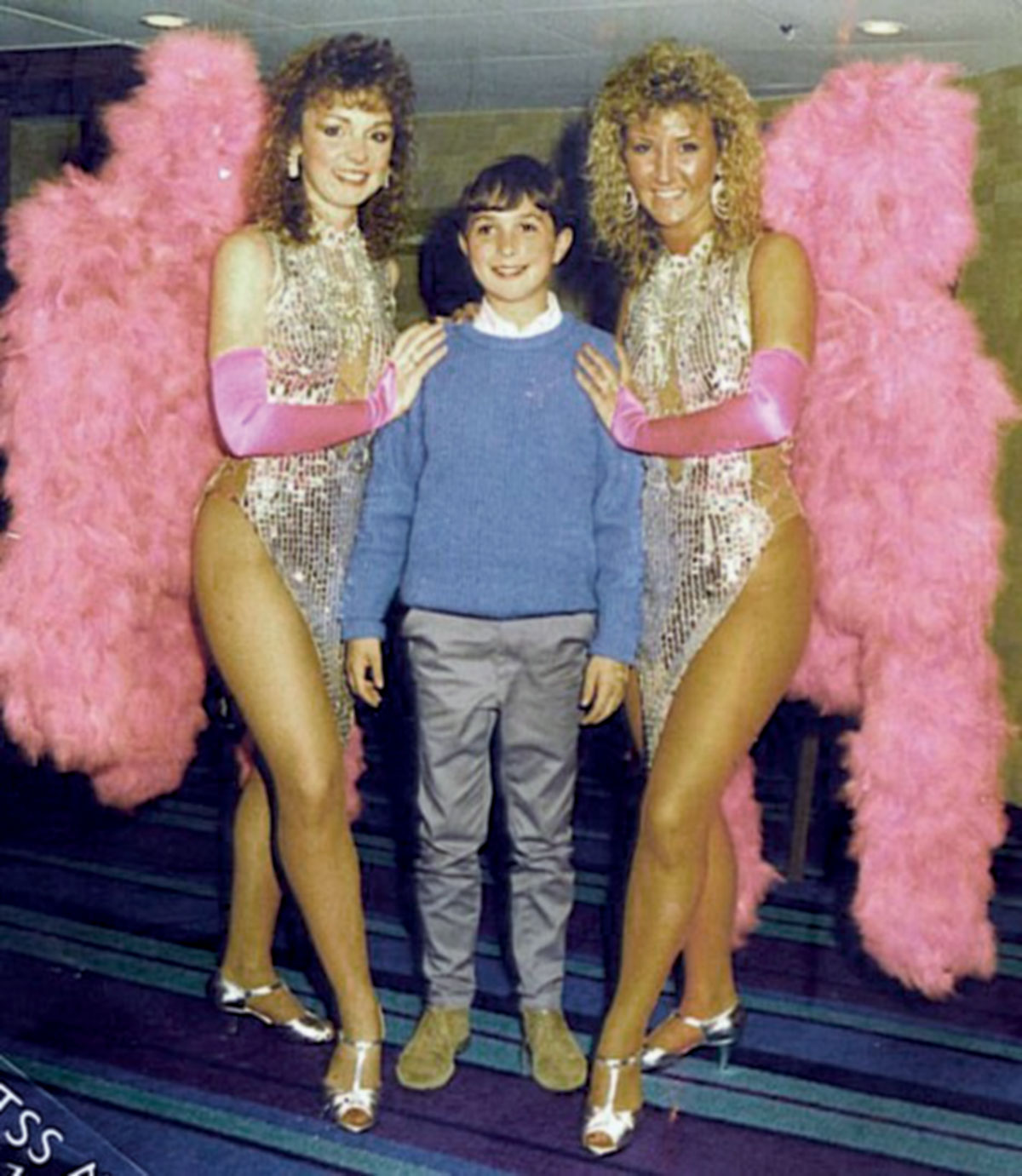
Nathaniel G. Moore
Writer, landscaper; born 1974
I remember the valley that Leaside was in, that hill, was a great place to toboggan. I think in Grade 7 and 8 we used to go there on Friday nights and steal trays from the McDonald’s to slide down on. I also had my first date at that McDonald’s with a girl named Darby Burger. I thought that was really funny.
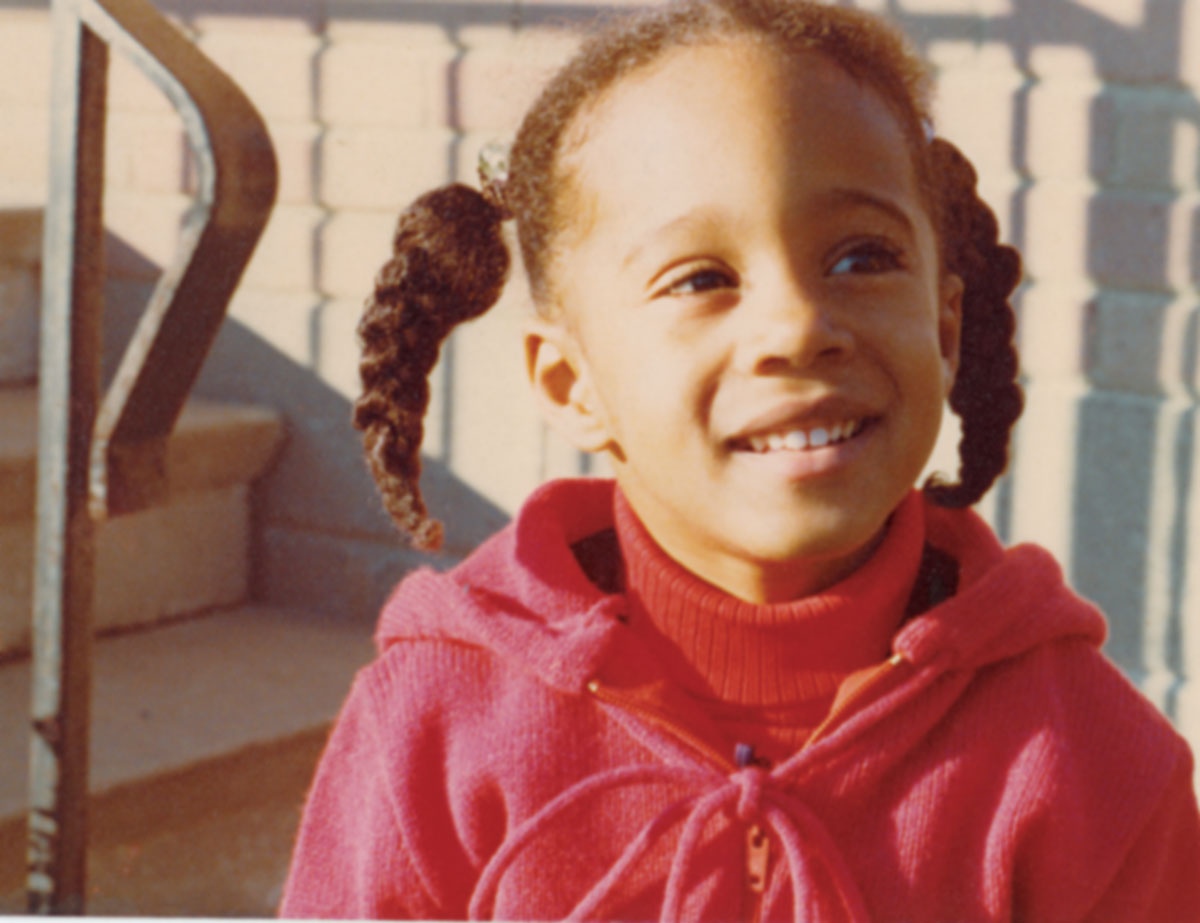
Bianca Spence
Arts administrator, born 1973
In 1979 the Art Gallery of Ontario exhibited King Tut’s treasures and my mom took me to see it. She used to be a teacher–librarian, and at the time was the president of the Ontario Library Association and was planning their conference. We were wandering around the exhibit and I had the big cassette-recorder audio guide and Dennis Lee was there wearing this big African dashiki. My mom had been in touch with him to come to her conference, but she hadn’t met him in person, so she went up to say hi and I spent ten minutes having a meltdown, jumping up and down with this giant tape recorder banging against my leg, screaming, “Alligator Pie!”

David Mirvish
Producer; born 1944
For the first few years of my life my parents lived with my grandmother in a fourplex on Page Street, which is just south of Bloor, off Clinton. I always remember the milk bottles that would be delivered. They were glass and the cream would separate and be at the top and the milk at the bottom. They also used to deliver ice in the summertime, pulled by a horse. You used to get a chip of ice to suck on as a kid. I worked Saturdays at Honest Ed’s as a ten-year-old, putting the goods in bags. I didn’t know how to run a cash register, but I did know how to take merchandise and put it in a bag!
I remember all the restaurants, like Larry’s Hideaway. My father used to take me on Sundays. They had a set meal of about ten courses they brought you, starting with this big Lazy Susan with all sorts of open-face sandwiches. All you had to decide is if you were going to have a steak or southern fried chicken or a fish dish—you picked your main course and everything else just kept coming. I remember the carrots being cut up into small little balls and cooked in red wine. I never tasted anything quite like that again. Or the Cork Room, which had the best cheesecake. They had a Latin American band, and on Saturdays my parents would go there and dance the cha-cha and I’d sit eating my lamb chops with mint sauce. Occasionally my parents would take us to the Victory theatre—not to see the girly part of the show. I was never shown that part. But I remember a magician: they lowered him into this case of water and he had to escape. They had headliners like Johnnie Ray come and sing.
In the fifties we had all the crazy promotions at Honest Ed’s—dance marathons and roller derbies and clown bands. We painted an elephant pink until we realized elephants breathe through their skin. We got it half painted and the Humane Society said, This isn’t a good thing, so we washed all the paint off. Apparently you can only see pink elephants if you drink, not in reality.
Mia Kirshner
Actress; born 1975
Toward the end of my time at Jarvis Collegiate, I would wander around the city, eventually winding up at Courage My Love, in Kensington Market. Inside was dark and musky, with the smell of incense, steam from the radiators, and puddles from melting snow on boots. I would hold photos of languid naked men and women wearing crowns of dried flowers, lying on thick Bukhoro rugs, my eyes stopping at their erect penises and large breasts. At the back of the store, piles of tin red hearts from Mexico made me wish I had someone to give that heart to. For those few hours, my imagination took hold and allowed me to be my true self. A dreamer.
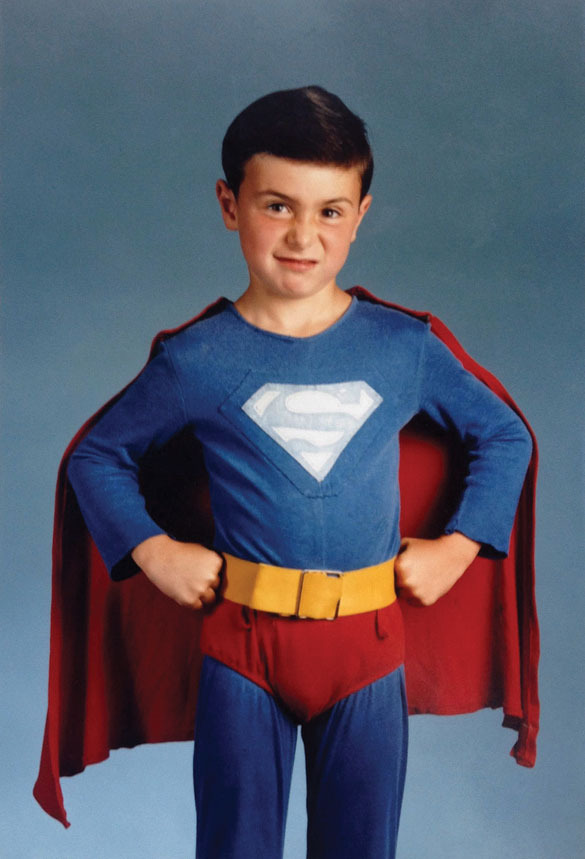
Michael Lista
Writer; born 1983
I grew up just outside of Toronto, in Mississauga. I sort of grew up as a lot of kids in the suburbs did, with the sense that you were on the outside of a lot of what was happening. I saw Toronto as this strange metropolis I couldn’t navigate, that I couldn’t have access to. At the time I was coming of age, the Scarborough Rapist, who turned out to be Paul Bernardo, was making his way across the G.T.A., and it sort of informed the way I saw the city—this menacing beast that was sitting across the lake, where these dangerous and terrifying things were happening. As a suburban kid you watch a lot of television, so for me Toronto, at least in my imagination, was also the Toronto I saw in a show like Today’s Special: Queen Street seemed like this foreboding place that emptied out at night, and the shopping mall would be populated with these semi-mythic creatures that had guard over the merchandise—a mannequin that would turn into a man when everyone had left. So it was this kind of intrigue and menace that I only really began to understand in a more secular way when I started attending high school in the city. But for a long time it was this menacing place that I guess, in the end, is just a stereotype of what a suburban kid would think.
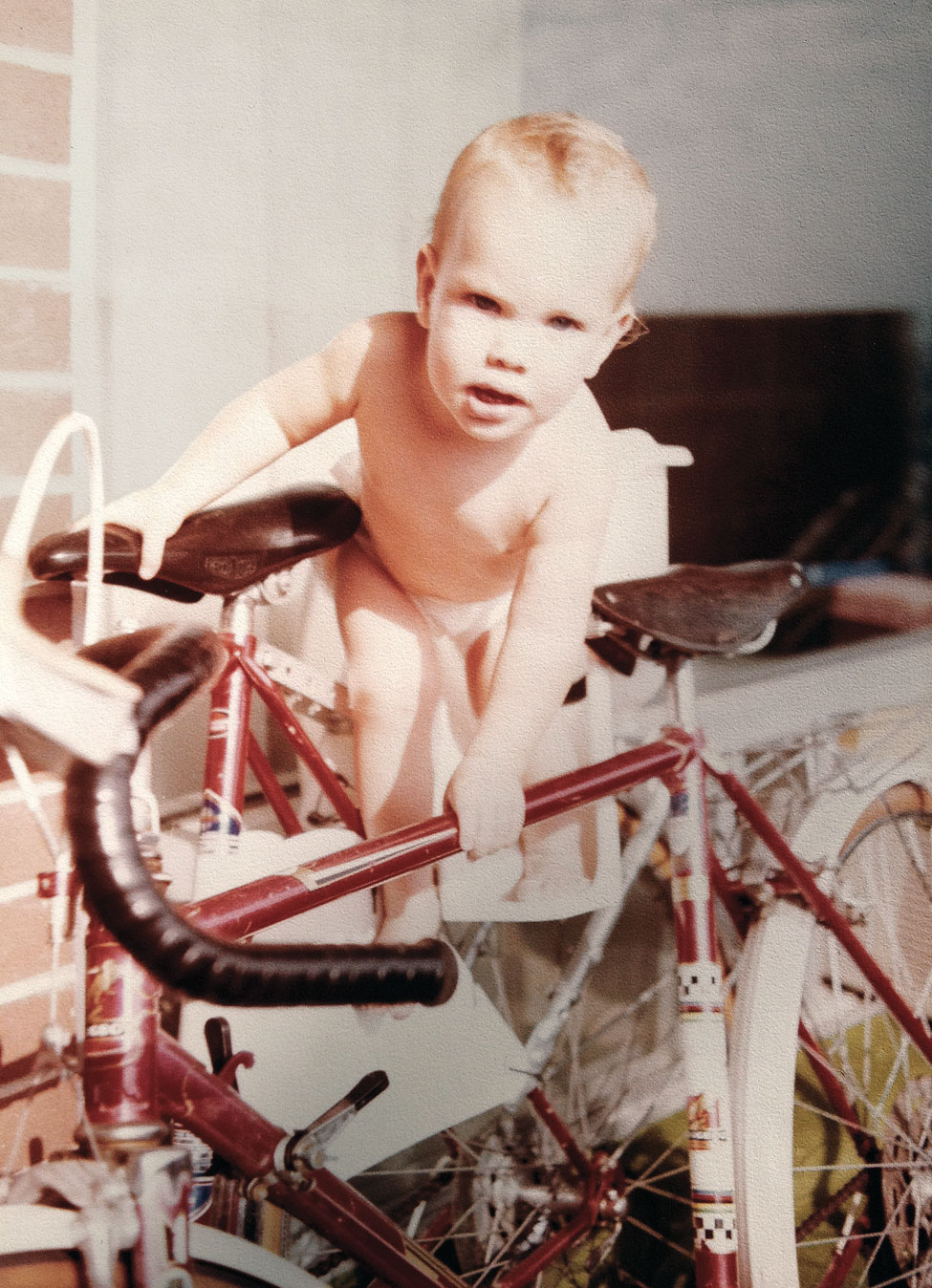
Yvonne Bambrick
Cycling consultant, photographer, B.I.A. co-ordinator; born 1976
I was always on my bike, which clearly I still am. I started on the back of my dad’s bike, in Taylor Creek Park. My parents had matching red Peugeots. I started taking the subway by myself in Grade 2, when I was about seven years old. I was in the French school system, so I would go from East York to Gabrielle-Roy, which is on Pembroke. It was dodgy then and it still feels a bit dodgy now. My mother, in preparation, sent me to street-proofing classes. It’s basically, What’s a stranger, Who’s a safe person to talk to for help, What’s the best way to walk home, How do you choose your route, Assessing the situation—just a general awareness of how to stay safe as a kid if you’re on your own. My dad and I did the route together for about a month, and then we would walk together but take separate subway cars. So I’d get on the car myself and then we’d both get off and he’d make sure I got on the bus. Even when I thought I was on my own, apparently he followed me for another few weeks after that. I only had one bad experience. I was one of those kids who would squat in the doorway of the train, with a book, usually a comic book, and I remember arriving at Main station, almost home, and as people got off the subway this one guy turned around and he hoofed me, just as the doors closed. And then all the nice ladies and gentlemen came to my rescue. I still kept sitting in the doorway after that.
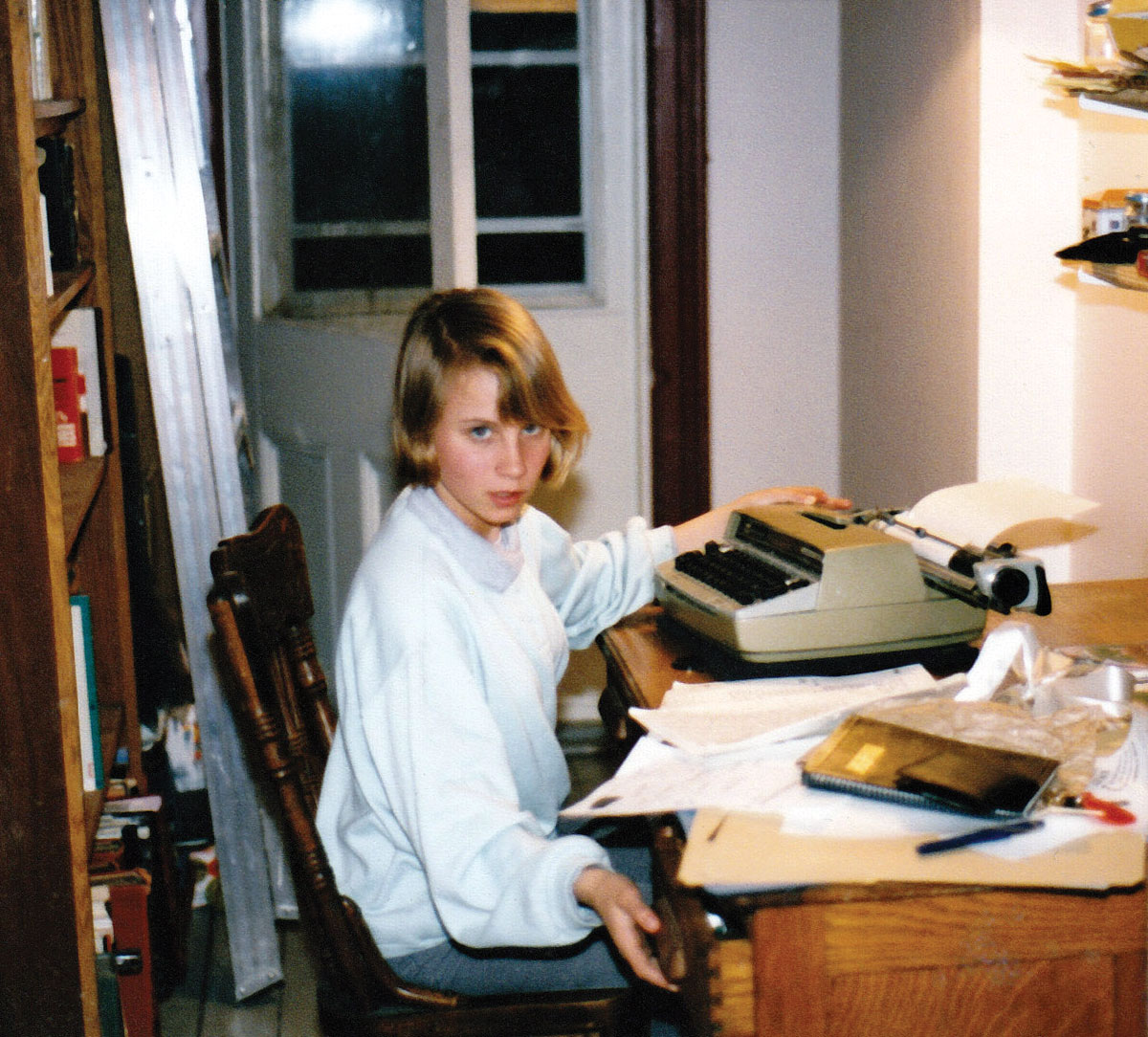
Emily Pohl-Weary
Writer, editor, arts educator; born 1973
I grew up in south Parkdale, in a big house with my mother, my little brother, and my mom’s best friend and her daughter, Sheena, who was my age and practically a sister. It was me, Sheena, and a whole neighbourhood of boys—at least that’s what it felt like. Sheena and I would go on these adventures. I’d read The Nancy Drew Sleuth Book and had my own magnifying glass and fingerprinting kit. We would explore abandoned buildings looking for “clues.” Now I realize they were probably crack houses or flophouses. I just remember feeling fearless.
I spent so much time at the Parkdale library. I would check out plastic shopping bags filled with books every week. There was a children’s librarian there named Rita Cox. She was a storyteller and she would tell Jamaican Anansi the Spider Man stories that just lit up my childhood. She also collected costumes for Caribana, so all of the kids in the neighbourhood would dress up in them. Rita considered us all her kids—she remembered everything about our lives and our families. She also got a massive Caribbean literature collection established there, and she screened sixteen-millimetre cartoons every week. She kept tabs on all the kids and she made such a difference in so many people’s lives. If you have a librarian like that, a love of reading develops organically. When I bumped into her in my thirties she remembered me, and asked about my mother and brother—she even asked about Sheena! She was just one of those astonishing people who make life in an urban neighbourhood special.
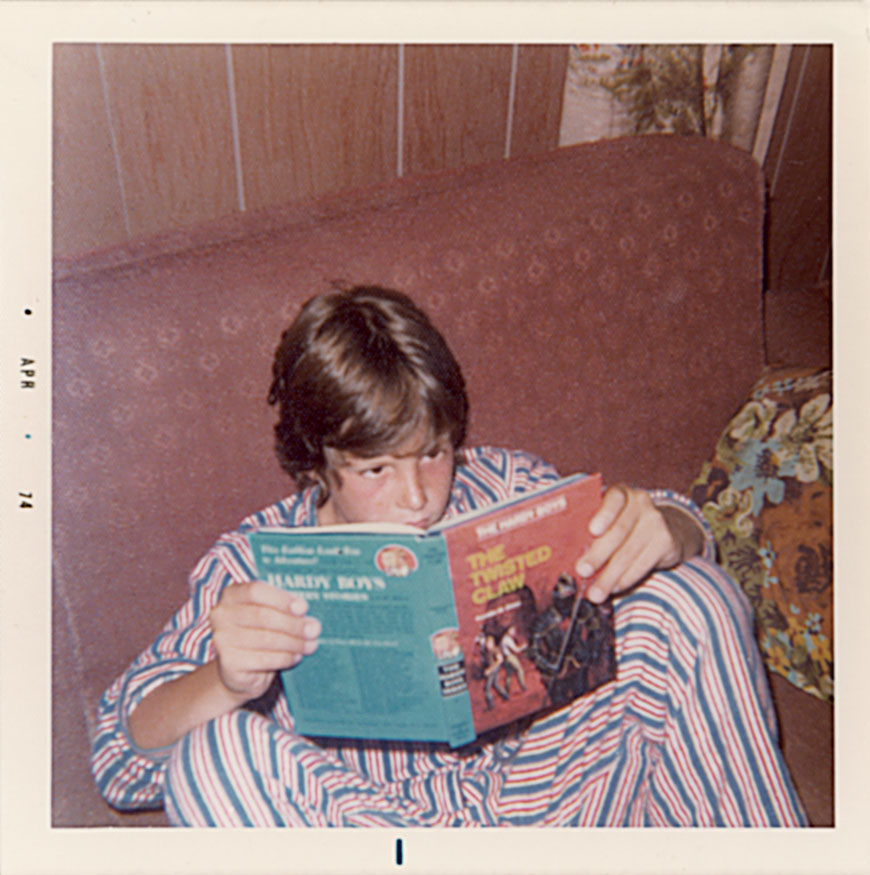
Chris Chambers
Poet, magazine distributor; born 1963
Everything comes back to Toronto’s parks for me, especially Eglinton Park. It’s where I learned about hoodlums, learned how to smoke cigarettes, learned how to drink beer, all at Eglinton Park. There’s a pool there—they had this waterslide where these big guys would slide down and just kill anybody who was underneath. One summer we were there and three teenage girls removed their bikini tops and got kicked out. They also had dances on the tennis courts with an orchestra that all kinds of strange people would show up to. And I played hockey there—it was a really central place.
I had amazing experiences in High Park too. I was a pretty serious cross-country runner as a teenager: I won the city championship in High Park in Grades 10, 11, and 12. The track club would meet there on Sundays and go for a long run. We’d run down to Old Mill some days, so I got a feel for the Humber from that.
And the beach. I remember in high school, a friend, David Shaw, a year older than me—he was the first guy I knew to get his parents’ car and drive down to Rockaway beach. He was walking around the beach late one night and met someone who claimed to be from a different planet. He told me the next day, “I met his guy and he told me he was from another planet,” and I’m like, “Oh, come ooooon,” and he gave me this look like he was offended by my response and said, “You never know.” That was the first story I ever heard about the beach.
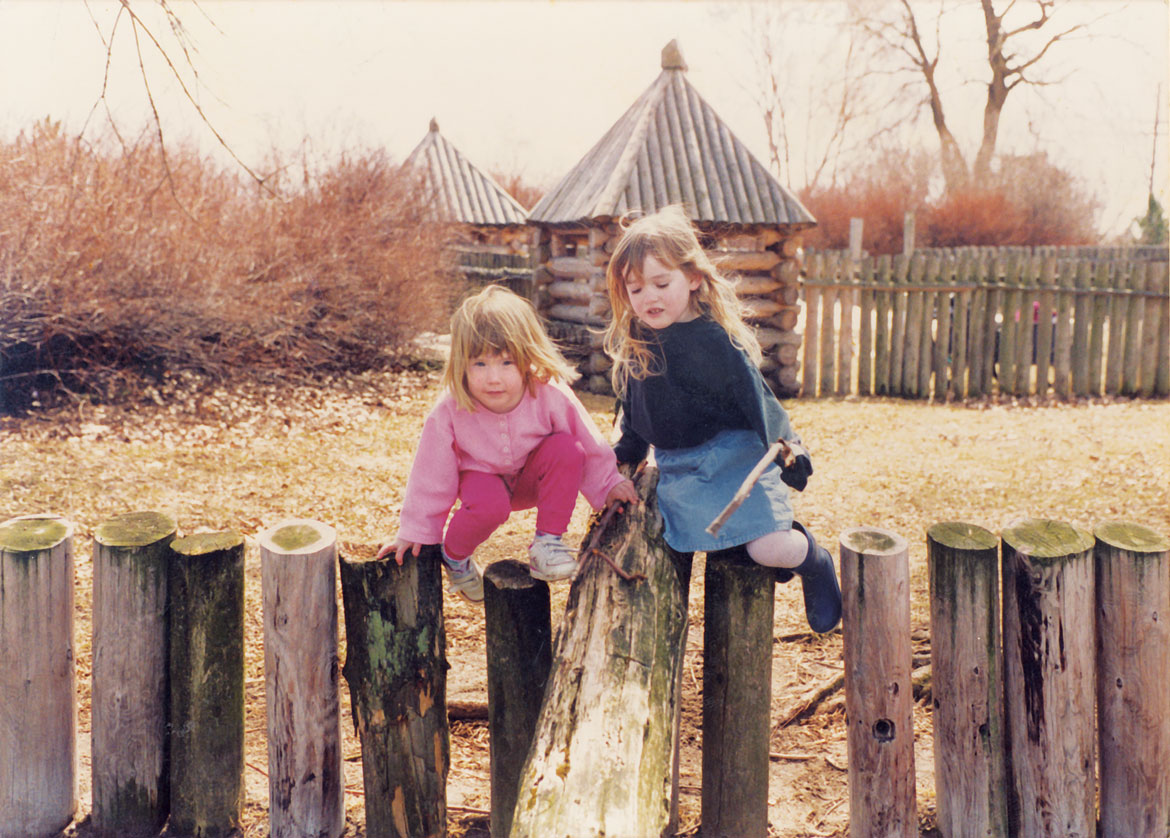
Georgia Webber, right.
Georgia Webber
Illustrator, born 1989
I had a unique experience because I grew up on Algonquin Island, so I lived in a really small town that was also ten minutes away from a gigantic city of two million people. It was only needing to memorize the last four digits of anyone’s phone number, because the first three were all the same. It was walking around with no shoes on most of the time. If you wanted to hang out with your friend, you just walked to their house. There was no sense of road safety or anything, there was no fear of the distance between the houses being something you might need a parent for. It’s just a simple small place where you know everyone, at least by face if not by name, and everyone knows you. There was this thing called “playing in a field” that doesn’t really exist anymore, where you could just go and be in a field and be with some friends and you could have a ball or a Frisbee, or maybe nothing, and you could make a game of it. There were meadows and wild areas to explore, and you could go down all the way to Centre Island, where there’s a theme park and tourist attractions just a ten-minute bike ride away. There were a lot of places where the sidewalk was patched with tar, and sometimes in the summer it would get really soft. So when tourists came by we would offer to write their name in the tar for a dollar, claiming it would be preserved forever, and then they’d walk away and we’d pat it down and offer to do it for someone else for a dollar. There was a lot of cheating the tourists. But I grew up with a really big fear of alleys and strangers, which I would say is unhealthy—it gave me a scary vision of what a big city is like that eventually I had to unlearn.

Zane Caplansky, right, with his grandmother and sister.
Zane Caplansky
Deli owner; born 1968
I had a very idyllic childhood, growing up in North York. We never locked our doors when we were kids. It was just the safest, nicest, almost Mayberry-like urban setting in that you knew all your neighbours. It was very multicultural. You didn’t live with any of the fears I think people have downtown. But one of my favourite things to do was take the subway downtown by myself. I would do it when I was ten years old—I don’t even think I would tell anybody—and I would get out at Summerhill and I would walk down Yonge Street, get down to Front, and then turn around and walk all the way back. My favourite thing to do in the city today is walking, but back then I’d do it at eight, ten o’clock at night on a weekend and people-watch. There were all these head shops and the punk scene and the goths and the gay community—you’d see all kinds of different people. It never even occurred to me until years later that that’s a remarkable thing, that you couldn’t do that in most cities, or you wouldn’t want to do that in most cities—that Toronto’s just this incredibly safe place.
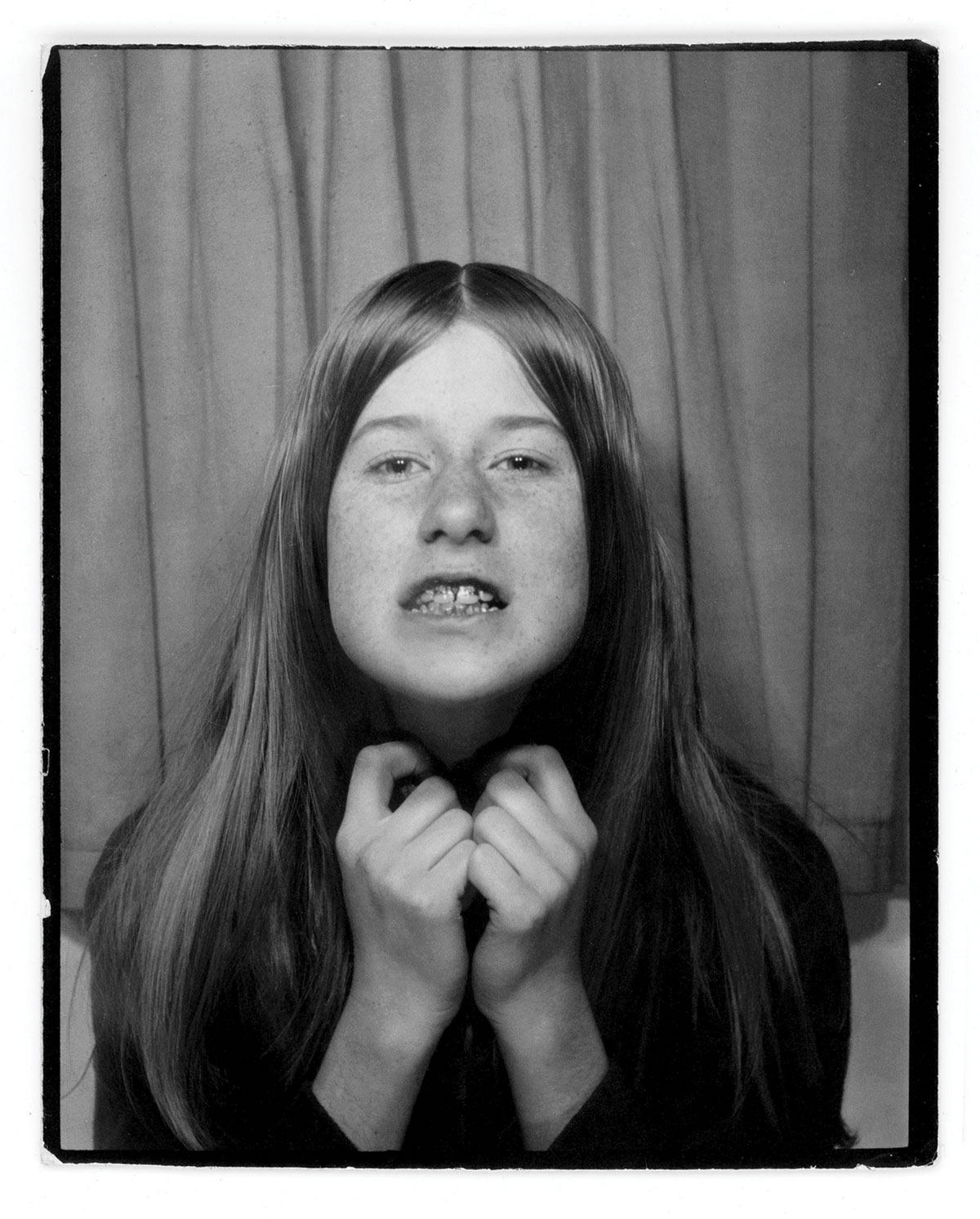
Gillian Holmes
Artist, book designer, customer service manager; born 1958
I went to Cottingham public school, and we lived west of Yonge Street, by the CBC. We used to cut through the CBC parking lot every day. You’d sneak through and just run across the parking lot, then head home. I remember one day cutting through, and my friends were ahead of me, and they turned around and said, “Duck!” So I went down and was waiting behind a car, and I remember a hand on my shoulder, and the hand very gently kind of lifted me up, and I turned around and came face to face with a belt buckle. I looked up and it was Tommy Hunter. He’s looking down at me and I’m looking up at him, and then he winked and let me go and I just took off. I didn’t cut though the parking lot for a week or two after that.
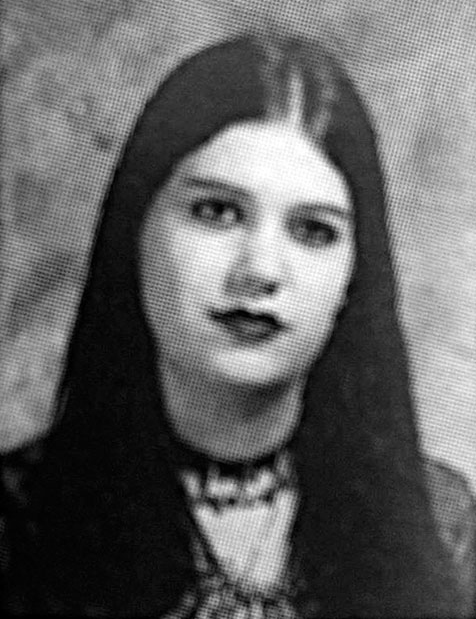
Liz Worth
Writer; born 1982
I was really into the punk and goth scenes when I was a teenager. In Kensington Market there was a place called Who’s Emma that was like a punk-rock collective kind of place, and there was a store upstairs that sold zines and stuff, and downstairs there was a little space that they used for shows.
Lee’s Palace used to have all-ages matinees on Sundays and that was a formative place for me, because that was really my first exposure to independent culture—bands like the Monoxides, Change of Heart, the Shuttlecocks, the Killjoys. It was a mind-blowing experience to be thirteen or fourteen and going to see bands and meeting a whole bunch of other kids from across the city, because you’re so used to seeing the kids who are in your neighbourhood or in your school. To find all these other kids who were interested in the same things you were was exciting. I really connected with some of the people I met at those shows. As adults, that doesn’t really happen. There isn’t as much openness to making new friends, and there was when we would go to shows like that.
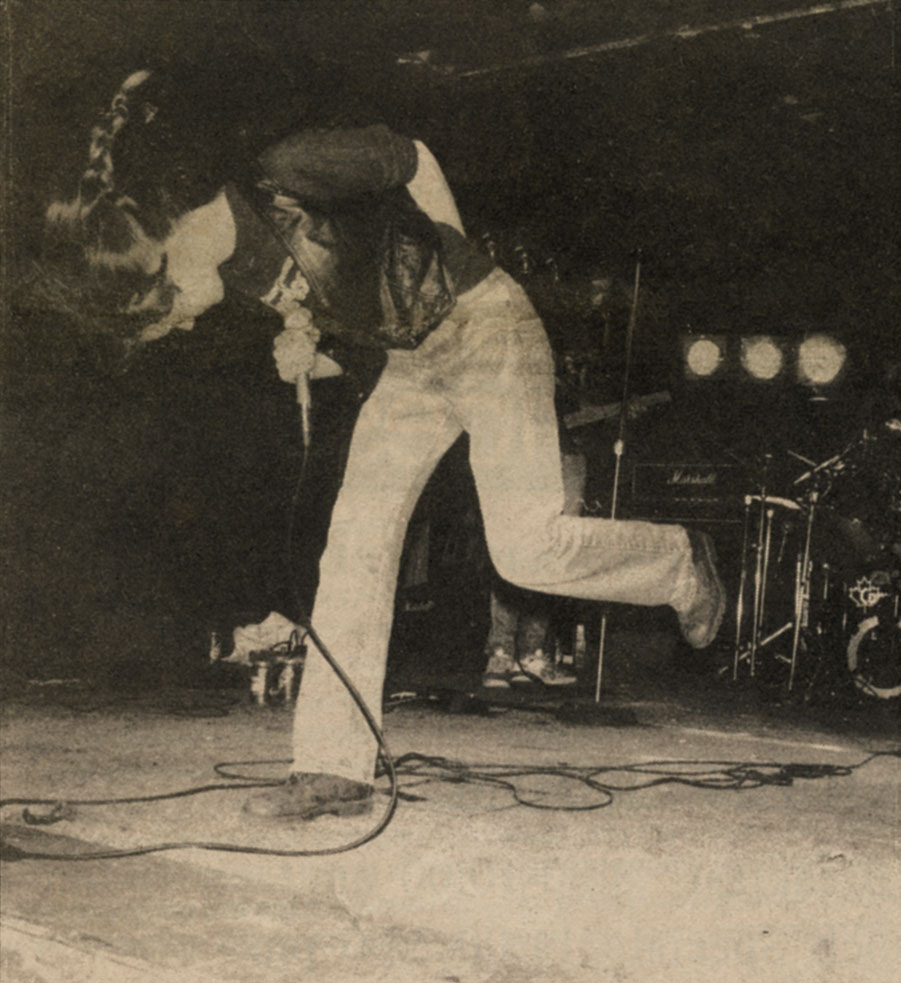
Shary Boyle
Artist; born 1972
I went to Wexford high school, which was an art school, where I discovered music, punk music in particular. And I had a band. Sometime around 1986 there was kind of a mild gang scene—youth gangs—that were in Scarborough, on the subway. There was a phenomenon of “rolling”: gangs of kids who would roll other kids for their leather jackets or their Doc Martens. So a couple of times I and the people I was with were targets of that because we were punks and we had leather jackets and boots and stuff. Downtown was a place you could almost escape this violence—which was hilarious because our parents would be like, Downtown is the violent place but the suburbs are where you’re safe, which is the exact opposite of what’s true. So being an outsider and kind of feeling like a freak in the suburbs you could come downtown and go to Kensington, go into Black Market and all the different shops and find your clothes and hang out at bars. Living in Scarborough was so isolating—no visual culture. What is amazing about Scarborough is that I did grown up in a really culturally diverse area, so there were a lot of different people with different racial, religious, or income backgrounds in my school, and that’s something that educated me. But overall it was bleak if you’re a kid from a family that was not culturally rich and they weren’t really introducing things around reading or music or visual arts. Going to Wexford was a massive driving force in my life.
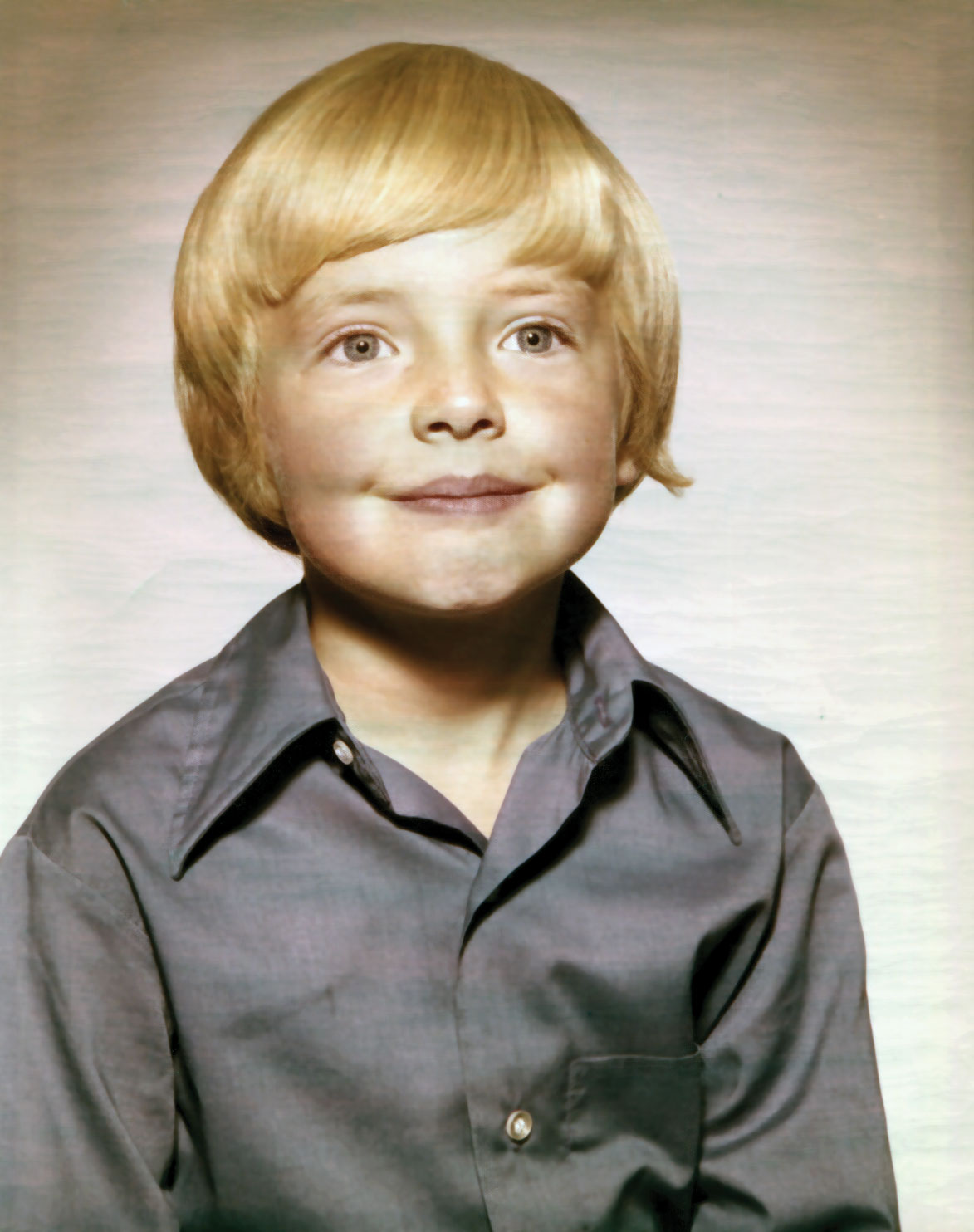
Maurice Vellekoop
Illustrator; born 1964
After eight years of Christian school, I was thrust into this completely alien world of the public school system—Thistletown Collegiate Institute, on Islington, north of the 401. I was very small and very effeminate and it was one of the worst times of my life. I got called “faggot” every single day of school and I lived in fear of getting beat up all the time. But what I thought was kind of special about the school, it was a very working-class neighbourhood and there were basically two groups, kind of like the Sharks and the Jets—you had the Discos and the Rocks. The Discos were all the Italian immigrants, basically kids who were into disco, and the Rocks were all the Scottish and English second-generation kids who were into metal and rock ’n’ roll. They had rumbles outside the school where they’d beat each other up. There may have been knives, but I do remember food fights in the cafeteria. I’d just get down underneath the table and wait for it to be over. A week later you’d notice chocolate milk that was still caked eighteen feet above your head.
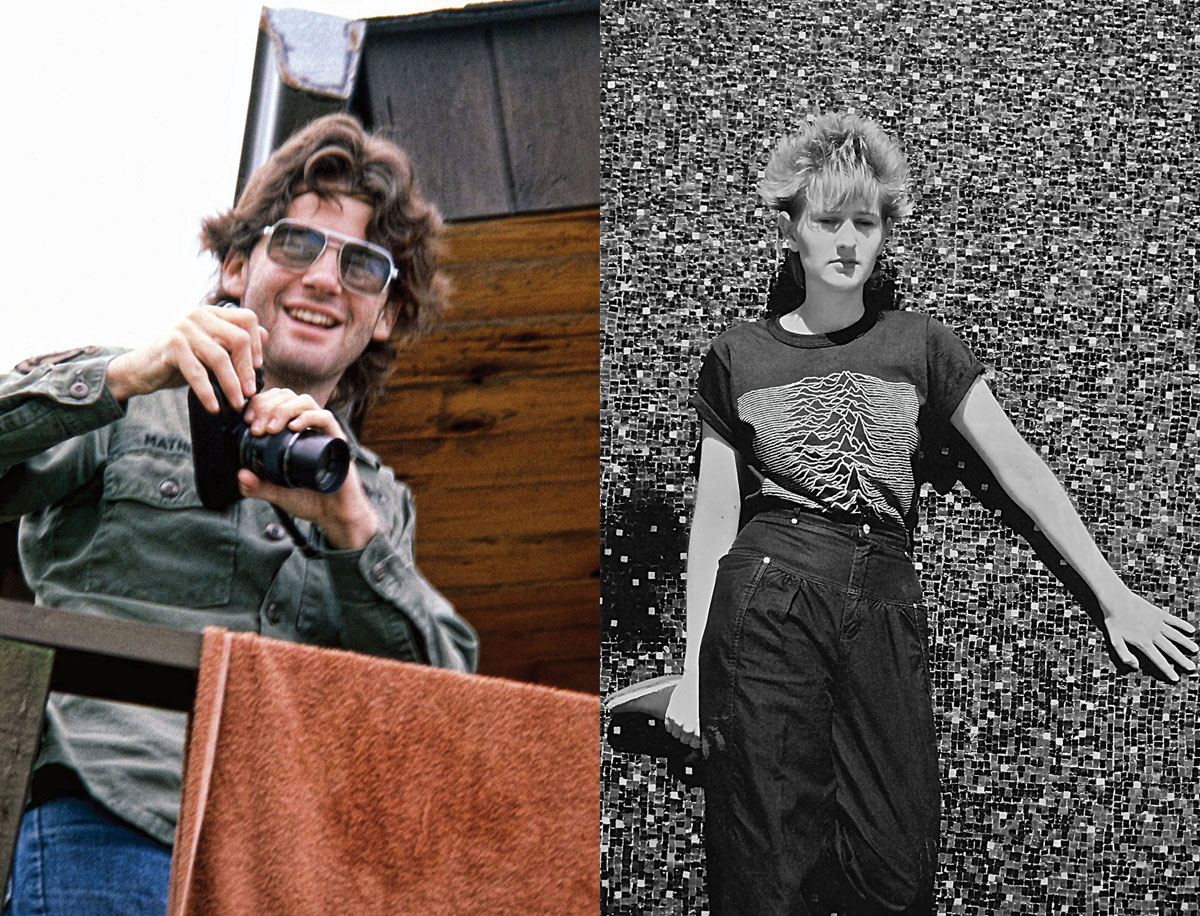
Jim Shedden
Publisher, filmmaker; born 1963
Sara Heinonen
Writer, landscape architect; born 1964
Jim: My friend Lisa Godfrey started a zine in high school and I kind of nudged my way in. It was called This Tiny Donkey Looks Rather Lost, which was a caption in a kids’ book. There were two issues before Lisa moved on, and then I changed the name to The Hanged Men Dance, from a poem by Rimbaud. And then Sara joined, and that was really welcome for several reasons, because doing it alone was a drag. Sara had a really good visual sensibility that she could translate, which Lisa also had, but I didn’t have the patience for. We started when we were seventeen or eighteen and it lasted into university when I started doing it with David Keyes. We were in Scarborough in a high school of two thousand people, but there were maybe a dozen people in school who were into punk and new wave. We were trying to create a culture that didn’t really exist in front of us, and we were trying to create connections, which of course is easy to do now, with the Web. We’d be excited about a band, we’d talk about the band, we’d interview the band, we might promote some event coming up, we might promote each other’s zines—all of this stuff happens throughout the day now.
Sara: We also wanted to bring to light bands and discussions that weren’t happening in the regular media. There was all this new music we were hearing, sometimes, on the radio, but no one in the media was talking about it otherwise. It connected us with it and validated how we felt about feeling different. Everyone would be at these shows of bands coming to town and we’d all review it, and we’d do interviews, but you’d read everyone else’s interview and see what they thought of that band. It was a community. We all wanted to do something creative. It wasn’t all about music either. The other thing about the fanzine and the culture was there were no rules. I had a short story in there—my first published story.
Jim: The Record Peddler, at Queen and Jarvis, sold our zine. You’d go up these stairs and on the right was the Record Peddler and on the left was a little bookstore called This Ain’t the Rosedale Library. And one day I turned left instead of right and that completely changed my life. When I look back, rock ’n’ roll old led me to everything I care about today. I met a lot of writers and other people in that store: Ron Mann and Elliott Lefko. I remember another time going to Records on Wheels, which was on Yonge then, and seeing this guy on the street selling his book—it was Stuart Ross. Here’s a guy, he wants to make books, so he writes them and then he designs them and he prints them and then he sells them. There was such an enthusiasm for D.I.Y. culture. That was a huge moment for me.

Pearse Murray
Broadcaster; born 1943
I came to Canada when I was about nine years old, from Ireland. We didn’t know anyone when we came here, so it was a little difficult for the first while. But when you’re nine years old you quickly meet people at school. Back then there was a young man, about my age or a year younger, and when we were about nine or ten, we went to the Metro theatre. Movies were a big thing for kids. The theatres planned activities just for them. There’d be a matron, and she’d make sure the kids were behaving themselves. At Saturday matinees they’d have three features. There’d always be a western for sure. I loved the old Roy Rogers movies. And they’d have yo-yo contests! It was a simpler time. You’d learn how to do all sorts of tricks. I could never do cat’s cradle. Around the world, walk the dog, I could do, but I could never master the more intricate ones.
I remember at one point we discovered that instead of putting a dime in the Metro’s pop machine, if we put a penny in, it would work.
There were three movie theatres right around there: there was the Alhambra, and there was the Midtown, which is now the Bloor. I loved horror movies and sci-fi, so I would scope out the paper and see if there was a horror movie playing. I’d go all over the city to see a horror movie.
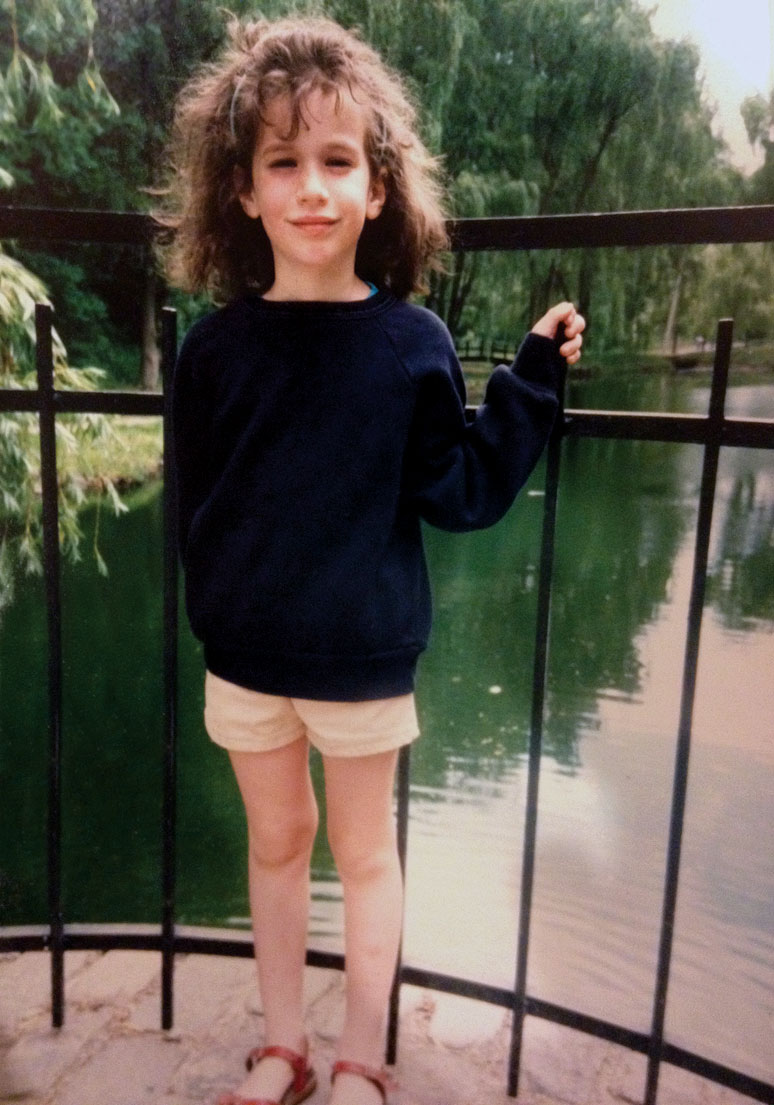
Lauren Kirshner
Writer; born 1982
In high school I loved going to Goodwill Buy the Pound, where I could buy weird vintage clothes and books in one place. I’d also go into the World’s Biggest Bookstore to see what books I really wanted to read. But I couldn’t afford those books, so I’d go next door to BMV and hope to find a used copy of it, and then if that failed I would go to the public library. And that was Friday night. You didn’t need to go out
after that.
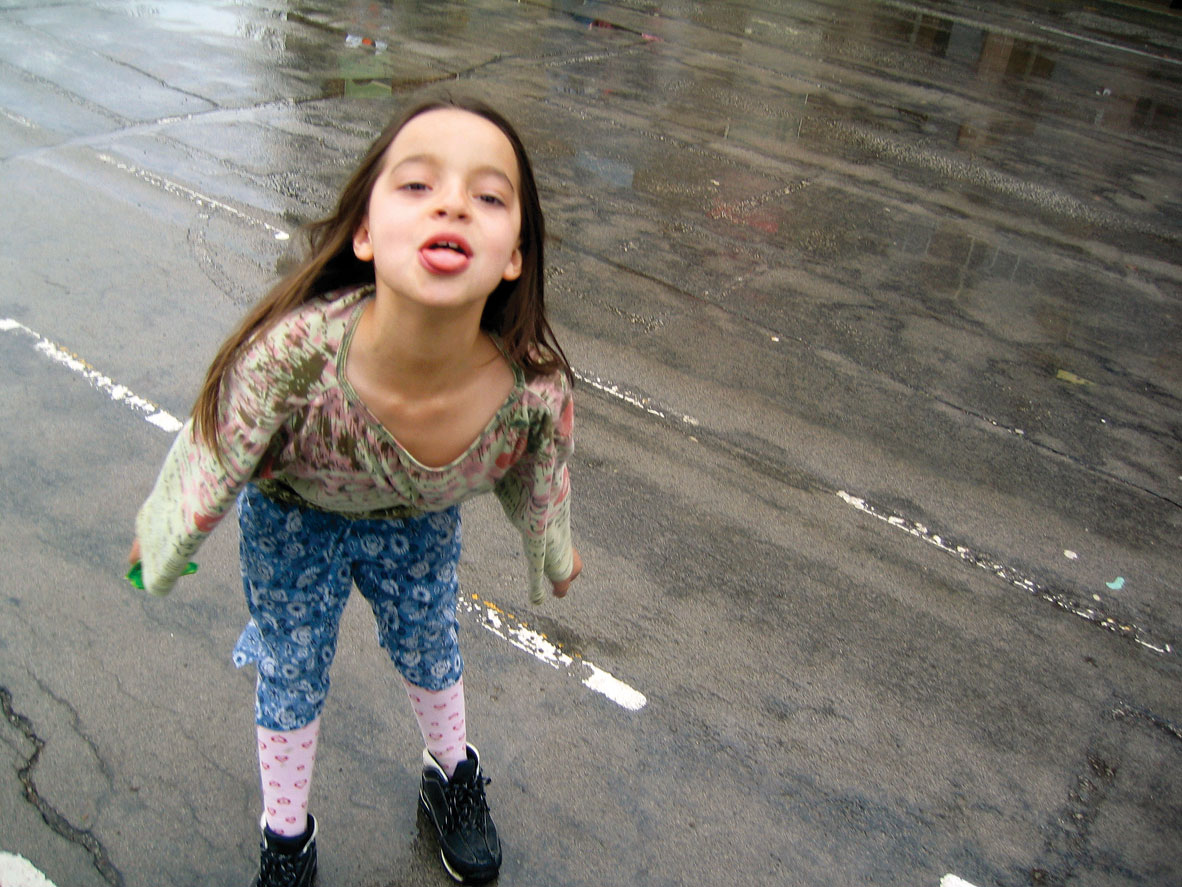
Clea Christakos-Gee
Student; born 1997
In elementary school I was a big fan of going to the Big Chill ice cream parlor. I went to Clinton public school, up the street, so every time there was a school event or a concert everyone would go down for ice cream after. We moved to Jane and Annette before I finished elementary, which was a pretty big change. We didn’t want to leave Clinton, so every day my mom or dad would T.T.C. me and my brother to Clinton and then go to their jobs, and my mom would come pick us up at school and take us home and then would go back downtown to teach or whatever else she was doing. Jane and Annette really wasn’t what we were used to or what we liked. Everyone there was very conservative, with their perfectly mowed lawns, and they all drove cars. But it was still pretty beautiful out there. We liked going to the Humber River, we liked doing family bikes rides, we went for walks. I remember liking it better on Halloween. The candy was definitely better in the wealthier neighbourhood. We only lived there for two years, which was enough. Our parents had enough with the back and forth, so we ended up moving back very close to Clinton public school.
Alexander Mair
Music industry executive (retired); born 1940
The first concerts I ever attended were in the early to mid-fifties. They were held at a place called the Palace Pier. I saw Johnny Cash and the Everly Brothers there. The Palace Pier had found a loophole in the laws of the time that said if you were serving food you could have entertainment. So you paid your admission, which at that time was probably two or three dollars, and they gave you a plastic plate with a couple of crackers and a piece of cheese on it, covered in Saran wrap. Most people never ate them, and I’m sure they picked them up and used them again the next night.
Ronnie Hawkins used to play six nights a week at the Concord. On Saturdays he had a matinee and you didn’t have to be twenty-one to get in, you just had to pay a dollar or something for chips and a Coke. The stage and the dance floor were in the middle of the club, and if you were over twenty-one you sat on one side, and if you were under twenty-one you sat on the other. Some people would get up and dance from the under-twenty-one side and, when a song finished, would sit down on the over-twenty-one side. If you’re on the over-twenty-one side the doorman had already checked your I.D., so the waiters didn’t ask your age.
I remember a promoter named Irvin Feld put together these road shows that would play Maple Leaf Gardens. They’d play for one night and then go on to another city the next night. They’d have at least half-a-dozen acts on it. People like Paul Anka, Buddy Holly. Usually Chuck Berry finished the first half, because no one could follow him. There was no security. After the show anybody could go back to the dressing rooms and talk to the artists. I have a picture hanging on my wall of me with Buddy Holly.
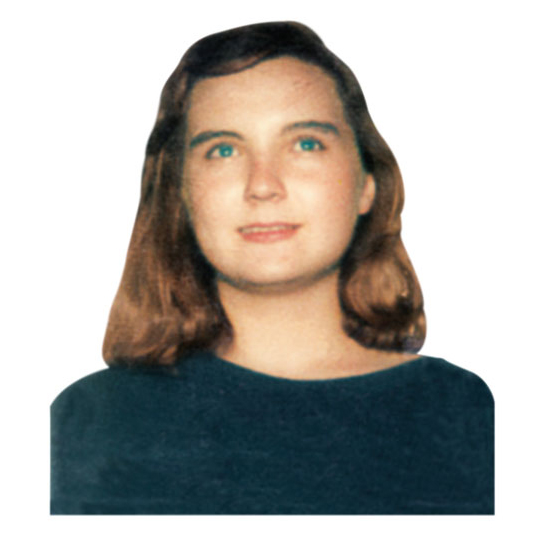
Rebecca Caldwell
Writer; born 1973
It’s important to understand just how nerdy my high school was. I went to the University of Toronto Schools, an academically focused school. We didn’t have a football team, but we had a math team, we had a classics team. One day in our final year we had to go do some St. John Ambulance training off-site. About five of us arrived late, and they wouldn’t let us in to do only part of the course. So suddenly it was nerds sprung—we were on the loose. What are we going to do? School isn’t expecting us, we have three or four hours, this is amazing! So, of course, we did the nerdiest thing ever and went to the Royal Ontario Museum. Part of the attraction was they had a baseball exhibit. While we were there we got to see all these old interesting artifacts, but the highlight for me was that they had the footage of the “Who’s On First” routine, by Abbott and Costello, which I’d never seen before, and I thought it was the funniest thing ever, and maybe still do today. Other kids would have been playing pool, smoking cigarettes—we went to the museum.
I also remember my father taking us to the David Dunlap Observatory, in Richmond Hill, where they would have open houses on occasion. There was no development up there at the time, so it was all dark. There were all these people hanging out with their own telescopes. It was like, these people have found their tribe, and they were hanging out and they were happy to let everybody look through their telescopes. One guy was focused on Saturn, which, I don’t know why, was always my favourite planet. It was really a magical moment. It was cool, it was interactive. The observatory’s telescope would be focused on a boring cluster of stars, so it was the hobbyists outside that were more interesting.
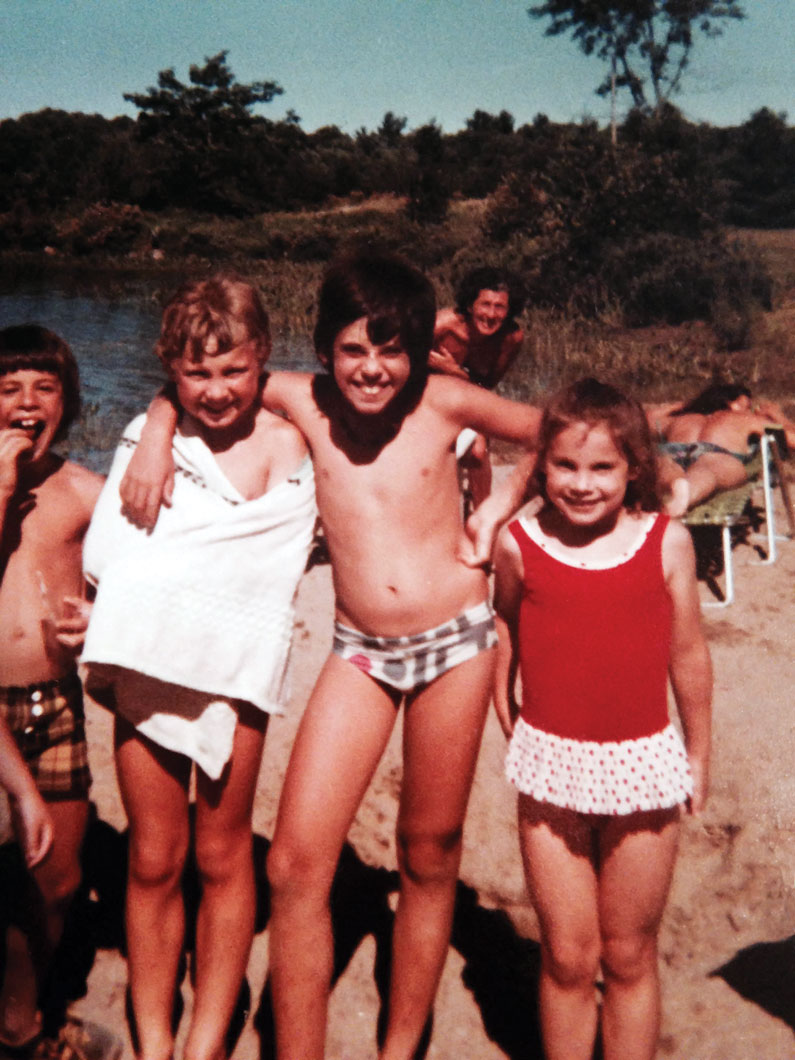
Michael Redhil, centre.
Michael Redhill
Writer; born 1966
I grew up in Willowdale, at Bayview and Sheppard. By the age of eight or so my brother and I would walk through the side streets and go to a store called the York Miller, which was sort of the ultimate corner store—it just had everything. So we bought our comic books and our sports cards there and our View-Master reels. We didn’t even know it sold milk and bread. The only time I tried to shoplift I got caught from that store. I was about ten years old. When you bought View-Master reels, you got three in a pack, but different packages had different reels in them. I wanted to buy one, and what I tried to do is slip the reels out of another package and put them in the one I was buying. But apparently it was pretty clumsy and they caught me and I got in trouble. It was a brilliant plan, but poorly executed. Like most of my plans.